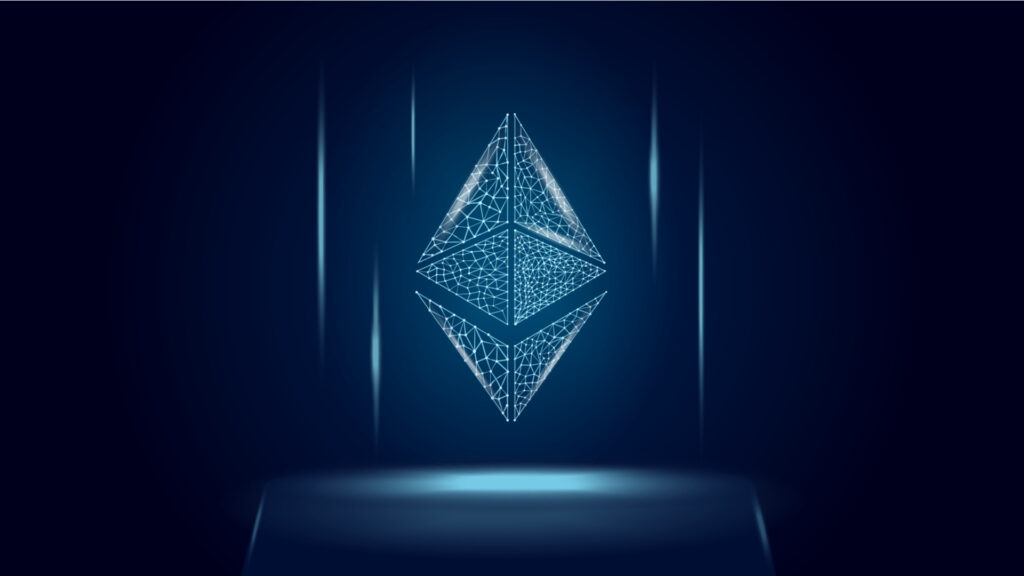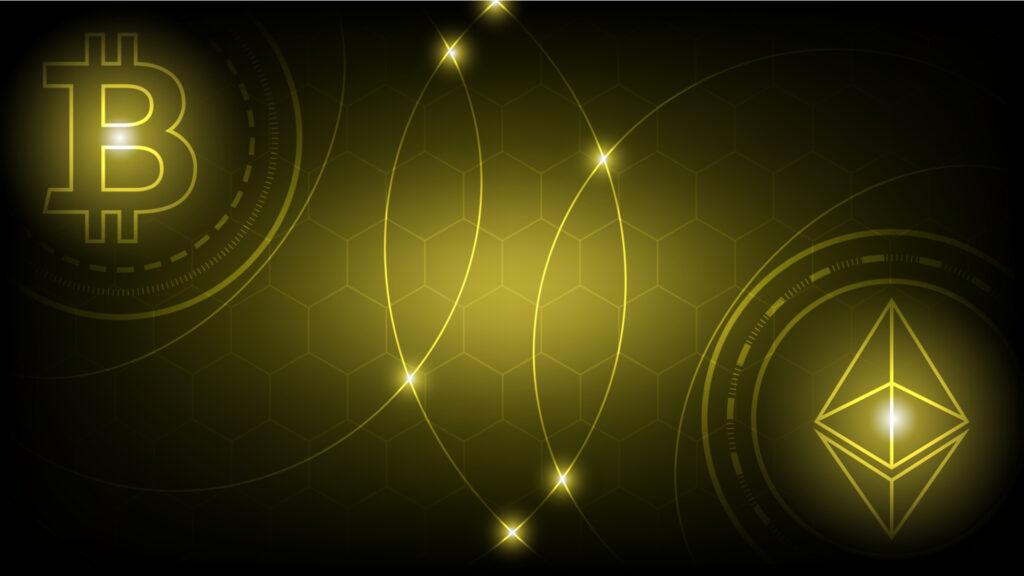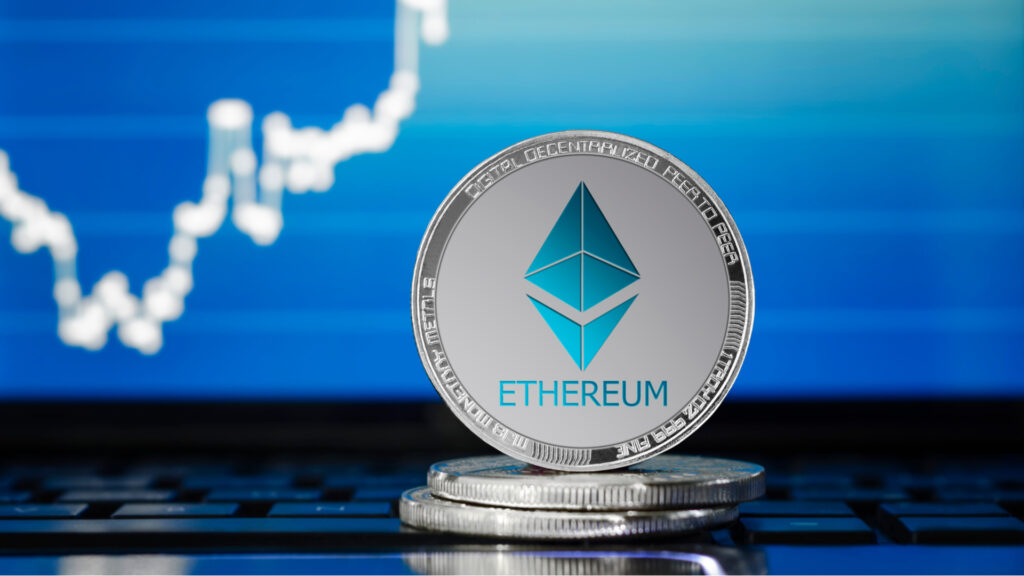What is Ethereum?
Ethereum is a cryptocurrency and a Decentralised Finance (DeFi) blockchain platform that builds a peer-to-peer network. The definition suggests that this enables participants to transact securely and quickly without using third parties.
Through blockchain technology, all transactions entered into the registry are immutable and distributed to all participants in the network, making it impossible to adjust or tamper with the data. All Ethereum participants have the same rights and can view any transaction, but their sensitive data remains encrypted. The users themselves also handle transactions: a transaction requires the consent of the parties and ETH (the native cryptocurrency created by Ethereum) coins.
About the emergence and creator of Ethereum
The history of the emergence of Ethereum goes back ten years. It was created by Vitalik Buterin, a Canadian-Russian programmer and former Bitcoin Magazine editor. At the tender age of 27, he made the Forbes list and was named the world’s youngest crypto billionaire after the price of one ETH (Ethereum coin) exceeded $3,000. Meanwhile, the Ethereum concept, developed by Buterin and Dr. Gavin Wood, was announced in 2013. Just a year after that, Ethereum founder Vitalik Buterin won the World Technology Award, surpassing even Facebook founder Mark Zuckerberg.
How does Ethereum work?
The history of Ethereum is not without reason comparable to Bitcoin. Like its direct competitor, Ethereum uses thousands of computers worldwide and even more nodes in the role of users. These “nodes “decentralize the network and protect it from hacker attacks. So, if one or more computers fail, their workload is divided among the rest. But, unfortunately, it is physically impossible to bring down all the computers connected to the network because of their remoteness and the lack of direct connections between them.
The entire Ethereum system, however, is controlled by a single computer called the Ethereum Virtual Machine (EVM). Each node on the network contains a copy of that computer’s data. It is updated once a new transaction gets added to the network. After that, it gets transmitted to the other nodes.
All interactions made within the network are publicly available and stored in Ethereum blockchain blocks (the Ethereum blockchain). These blocks get verified by the miners who mine the ETH cryptocurrency in this way. Once mined, the blocks become part of the digital archive known as “the ledger.”
The mining used to verify the blocks and mine the coins is called Proof-of-Work (PoW, or “consensus mining.") Each block consists of a 64-digit code, which miners must find and identify using powerful equipment. The miner who proves the code to be unique and solves it first receives a reward from ETH Coins. After that, the new ETH coins get created from the so-called “gas,” and users pay a fee to the miners for the network transactions. The tariff is essentially the engine of the entire blockchain system, but it also acts as a barrier to limit the number of coins, miners, and users.
It is how the demand for Ethereum cryptocurrency gets ensured, as it holds the entire system together, from stakes to rewards.
Smart Contracts

Smart contracts are codes, or computer algorithms, by which ownership of an object is stored, controlled, and made available. Thus, through a smart contract, it is possible to record the terms of any transaction, beginning with the registration of real estate and ending with ordinary transactions. Moreover, thanks to smart contracts, the parties to the contract can do without intermediaries: the contract itself monitors compliance with the prescribed conditions, initiates the transfer of funds, controls the timing of execution, etc.
In the case of Ethereum, smart contracts get used to validate network transactions related to cryptocurrency. They are written in the programming languages Vyper and Solidity and then verified by Ethereum Virtual Machine (EVM) and entered into the blockchain register.
The Pros and Cons of Ethereum
Users of Ethereum have the following advantages:
- Decentralization. All data and trust get equally distributed among participants, so there is no need for centralized decisionmaker and intermediaries.
- Fast scalability. Businesses, whether small or large, find it much more advantageous to use off-the-shelf Ethereum-based solutions than to build their blockchain system from scratch. For example, Ethereum allows the creation and administration of private networks through a SaaS platform.
- Guaranteed security. Ethereum offers multiple layers of security protocols, open source, and certificates of compliance with all international requirements.
- A large network. As we said before, Ethereum is connected to thousands of computers and nodes worldwide. Therefore, it makes Ethereum ideal for corporate collaboration and big business.
- Private transactions. Ethereum encrypts all incoming information and only gives access to those members of your partnership that you approve.
- Flexible consensus method. Any transactions recorded on the blockchain are forever immutable. But the consensus mechanism can be customized on a private network: for example, by reducing the infrastructure required for PoW.
- Tokenisation. A company can register its product on the network and get its digital counterpart. You can use it to fragment assets that are too large - such as real estate — to take its products to the next level. For instance, buying a digital art exhibit as a Non-fungible Token (NFT) or boosting the company’s financial growth.
- Compatibility. Ethereum does not prohibit companies from combining solutions from different I.T. vendors and allows applications from other developers to be integrated into its blockchain, such as the Kaleido Blockchain cloud.
- High standards. Ethereum uses the ERC-20 development protocol, Swarm storage, and Whisper decentralized communications.
Nevertheless, despite such a solid list of benefits, Ethereum, like any network, has disadvantages:
- Multitasking. On the one hand, the Ethereum ecosystem has an advantage over Bitcoin, which has only one purpose - to act as a means of payment. But simultaneously, the number of interconnected Ethereum projects increases the risk of crashes and programming errors.
- Volatility. Investing in Ethereum is quite risky because of the dramatic spikes in the price of ETH in the past. Therefore, Ethereum is not suitable for beginners.
- High gas fees are because the higher the amount of gas the user sets per transaction, the more willing miners will be to take the job. Conversely, transactions of a simple type with a low amount of gas are unattractive to miners, so competition arises, leading to network stagnation.
- Network congestion. Due to the number of users, the Ethereum network occasionally fails to cope with the load. Still, in Ethereum 2.0 (a complete update of the blockchain system), this problem is completely solved.
How to Mine Ethereum

In general (and mining Ethereum), mining is creating a transaction block for later placement on the blockchain. Computers do the process with a high hash rate and specially installed mining software. Because the Ethereum system is decentralized, all network participants must authenticate each transaction. It is the miners who help them do this by solving complex computational tasks and generating new blocks.
So, to become an Ethereum miner and start mining ETH Coins, you will first need an ASIC. It is inefficient to mine on a laptop or a regular P.C.) with the latest generation Nvidia video card (ideally) or a cloud farm, which large computer centers provide for online mining. The best option is to join a mining pool, i.e., a community of miners, to mine the coins together. In short, mining Ethereum is no different from mining any other cryptocurrency.
Currently, Ethereum still uses a blockchain based on Proof-of-Work but is also transitioning to Proof-of-Stake (also called mining or staking), which gets planned to get implemented in Ethereum 2.0. Unlike mining, mining is an environmentally friendly way of mining new blocks and coins. Additionally, it does not require high-performance equipment and has high electricity costs, which is why it is considered today’s most promising area of cryptocurrency development.
Ethereum Classic
So, what is Ethereum Classic? It is the first decentralized crypto platform based on the Ethereum blockchain, using smart contracts and open-source code. The virtual machine we discussed above controls the platform, which allows participants in the network to conduct various transactions on public nodes. Simply put, there is no difference between Ethereum and Ethereum Classic. Ethereum Classic is Ethereum in its traditional and original sense. It is the foundation on which Ethereum 2.0 was subsequently created.
Ethereum 2.0

Ethereum 2.0 is an updated version of Ethereum Classic built on the Proof-of-Stake consensus algorithm, a more beneficial and environmentally friendly alternative to the Proof-of-Work algorithm. After more than two years of development, Ethereum 2.0 was officially launched on 15 September 2022 and is in high demand. Currently, the merger with Beacon Chain, an innovative blockchain that manages stacking, a registry of validators and chains of segments, is fully completed.
What exactly has changed in Ethereum 2.0 compared to the previous version? First, scalability has finally been addressed thanks to the new segmentation system (i.e., spreading transactions across multiple small blockchain networks). Thus, segmentation has made Ethereum accessible to users with weak hardware because now they do not need to process information collected from the entire network - information from a single fragment is enough. It is called “sharding.” It not only increases Ethereum’s visibility by making it more user-friendly and understandable for the masses, but it also takes the load off of Ethereum Classic, which is still the leading network (network) for the time being.
To become Ethereum 2.0 validator, you’ll need to stake at least 32 ETH (this amount may have changed by the time you read this article, so check it). Next, all you will be required to do as a validator is leave your computer connected to the network. After that, the rewards, in the form of new ETH Coins, will be automatically generated. The 32 ETH will get set before acting as a guarantee that the validator guarantees his excellent faith and participation in the network. Otherwise, their ETH rate will get burnt as compensation for the damage caused to the network.
Ethereum vs. Bitcoin
Being the original cryptocurrency - the coin from which altcoins emerged - Bitcoin dominates the crypto market today, having the highest market cap, price, and visibility.
However, Bitcoin has limitations that make it inferior to Ethereum. For example, the Bitcoin network scales even worse than Ethereum Classic, as it has no plans to change the Proof-of-Work algorithm and does not have its ecosystem. Too high a price also plays against Bitcoin from the point of view of its development. That’s because BTC Coins are now acting as a store of value. It is like precious metals or real estate rather than an actual means of payment. Additionally, Bitcoin has a limit of twenty-one million coins allowed in circulation, while the question “How many Ethereum coins are there?” is not even answered. There is and can be no limit here because it is instrumental and actively used in the network.
How to buy and sell Ethereum
Nowadays, there are many cryptocurrency exchanges, and most of them list Ethereum Coins. It makes buying and selling this cryptocurrency extremely easy and convenient. However, exchanges have different security levels and ETH (Etherium transaction fee), so check the terms and conditions before registering.
Once you have decided on a platform, you must create an account and authenticate yourself by validating your passport details to the platform. Immediately after that, you will have the option of funding your account. You can easily buy Ethereum with a credit card in a few clicks by going to the cryptocurrency listing section. So, let’s talk more about what this looks like in practice.
Users often exchange U.S. dollars or other lesser-known and profitable cryptocurrencies traded in pairs with ETH for Ethereum. During the purchase process, you will need to enter a certain amount of money in dollars you want to exchange into Ethereum, depending on the current exchange rate. The platform will automatically calculate how much ETH you can get at that time. If you are not happy with the ratio of price to potential profit, you can cancel the exchange and wait for the rate to change. Selling Ethereum Coins is the same way, except that you convert them to U.S. dollars when you make the exchange.
As soon as you purchase ETH Coins, you can transfer your funds to your Ethereum wallet or cryptocurrency card (if you use one beforehand) or withdraw them in fiat currency using a terminal. But most often, you buy ETH coins for further storage in anticipation of rising prices - then the most profitable and secure option for you is a digital wallet, either cold or hot (read more about them in our other article).
But if you plan to interact with the Ethereum network (e.g., for mining/mining), then ETH cryptocurrency comes in handy here and now. First, connect the wallet stored in Decentralised Applications (dApps). You can then purchase goods with ETH, play blockchain games, lend, or conduct other financial transactions available within Ethereum.
How to stake Ethereum

As we explained above, staking is an alternative to mining; therefore, the differences between the two are fundamental, starting from the concept and ending with the technology used. For example, network members support the system with their digital assets and get rewarded accordingly. The users who provide this support (i.e., who place bets) are called validators or stackers.
Placing ETH for steaking is more accessible than mining, as it requires neither serious equipment, video cards, nor significant resources. Moreover, in some cases, you only need a mobile device with an app installed.
Here are the instructions for those who want to invest in Ethereum 2.0 (invest in Ethereum 2.0) through Binance exchange and not by creating their node or pool (that is the easiest way and great for beginners):
- Register on the exchange by filling out the appropriate form with your personal information. Make sure you have a strong password and two-factor authentication!
- Fund your account. You can also do this with a debit or credit card, via instant transfers between digital wallets, or via SEPA. Just check beforehand how much fiat or another cryptocurrency you will need, so you can exchange it for the minimum amount of ETH coins you need for steaming.
- Make a bet. To do this, go to the “Earn” tab, select ETH 2.0, and click “Bet Now”. Assets get placed at a 1:1 ratio.
The Future of Ethereum: Predictions from Experts
After the launch of Ethereum 2.0, the blockchain’s popularity skyrocketed. It is the only one today that eliminated the flaws governments and industry leaders criticized mining and Bitcoin particularly. Moreover, the regular emergence of new applications and services based on Ethereum has stimulated the development of the blockchain and the entire crypto market, facilitating its integration into the traditional economy.
Currently, Ethereum faces several challenges: whether it can pull off a new fast and complex technology update schedule to avoid a hard fork and extend the reach of Proof-of-Stake to stay ahead of competitors. Furthermore, some experts, such as Avichal Garg, believe that Ethereum will lose out to Bitcoin in the long term, which will eventually re-occupy the niche. Nevertheless, there’s no denying that the move to stacking a significant player like ETH will stimulate a new round in the development of the entire crypto market and spawn new viable projects, NFTS, technologies, and concepts that will make Ethereum a trailblazer in the field.